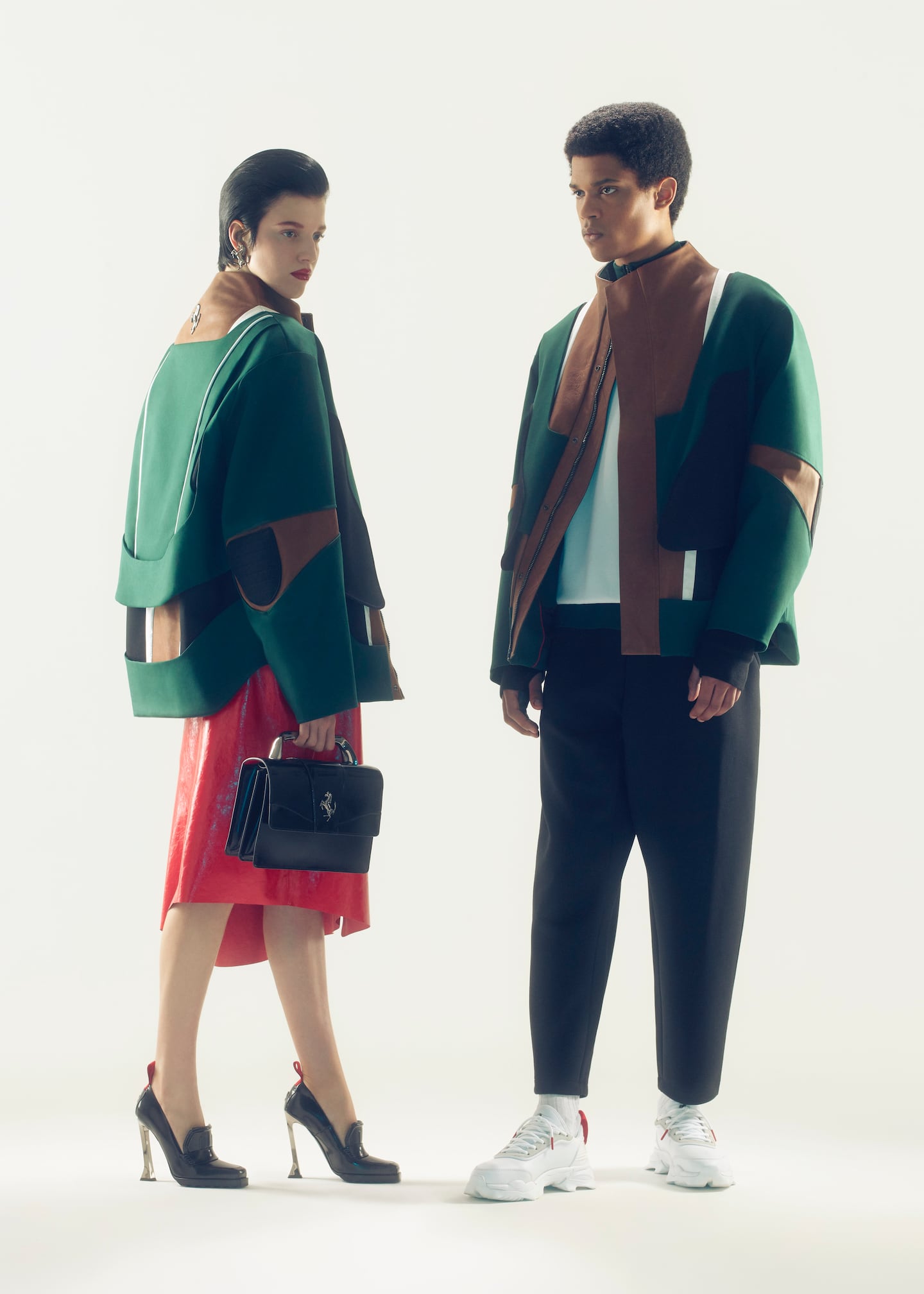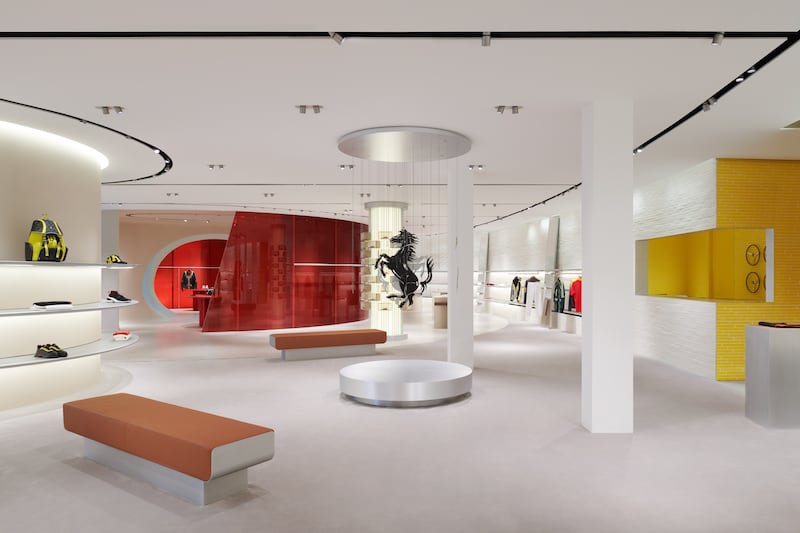
The Business of Fashion
Agenda-setting intelligence, analysis and advice for the global fashion community.

Agenda-setting intelligence, analysis and advice for the global fashion community.

Ferrari will stage an elaborate “fashion experience” this weekend, inviting journalists and guests to a multi-day event culminating in the carmaker’s first-ever runway show at its Maranello, Italy factory.
The move is part of a multi-year plot to upscale the brand’s offering outside its iconic sports cars. In addition to revamping its fashion line (which used to be dominated by red polyester polo shirts), the group has been discontinuing mass-market licenses like perfume and stationery, while transferring others to top-end partners like Swiss watchmaker Richard Mille.
While ready-to-wear collections are hardly a profit driver for most brands, Ferrari hopes the show will lend a halo of legitimacy to its branded products: elevating the items from the status of souvenirs for “brand admirers” to become actual expressions of the house and its ideals.
“Our brand is our most precious asset,” Nicola Boari, Ferrari’s chief brand diversification officer said. “Fashion is a great way to reach a bigger audience and make the brand relevant to people’s lifestyle. But the quality of the products has to align with our values.”
ADVERTISEMENT
To spearhead the runway revamp, Ferrari tapped Rocco Iannone, a designer who previously worked in the menswear studio for Giorgio Armani and as creative director of Pal Zileri. His first collection — a line-up of dressy-casual leather overcoats, relaxed trousers, high heels and sporty sneakers — will be released for sale Monday online, as well as at a renovated flagship boutique in Ferrari’s historic Maranello hub (where the brand is also opening a restaurant by star chef Massimo Bottura).
Other flagships set to be renovated with the new, more luxurious store concept this year include locations in Milan, Rome and Dubai. The fashion shows are set to become annual events, with “see now, buy now” main collections followed by “drops” throughout the year.
Exor’s Fashion Moves
The move to reposition and relaunch Ferrari’s fashion business comes as its owner Exor, the investment vehicle of Italy’s billionaire Agnelli family, attempts to make in-roads in fashion on other fronts. Last December, the group acquired a majority stake in Shang Xia, the Chinese luxury start-up previously backed by Hermès. It has also purchased a 24 percent stake in shoemaker Christian Louboutin.
Those could be preambles to a bigger move: speculation that Exor and the fashion giant Armani are weighing a tie-up have swirled ever since the brand’s 84-year-old founder said he was open to taking on an Italian partner after years of fiercely maintained independence. Armani rejected a pitch by bankers to merge his company with Ferrari, Il Sole 24 reported Wednesday.
Exor has said it isn’t targeting fashion as a sector, but rather specific companies it sees as aligned with its expertise in managing brands. But the recent forays into fashion do seem like a pivot: the group’s previous investments outside of the automotive sector included the Juventus football team, The Economist magazine, and a press group that owns Italian newspaper La Repubblica.
At Ferrari, revenues from licensed products like fashion and sponsorships for its racing team made up 11 percent of its €3.5 billion ($4.26 billion) in annual sales last year. The company has said it aims to decrease the overall volume of licensed products sold (in order to protect its brand image) while targeting higher profitability in the division: “branded products” are meant to account for 10 percent of operating profit within 7 to 10 years, the company said in November 2019. Earlier this week, Ferrari named an electronics executive, Benedetto Vigna, as CEO to lead the brand under Exor chairman John Elkann as the carmaker tries to bounce back from a 9 percent drop in revenues during the pandemic last year.
From ‘Merch’ to Fashion
ADVERTISEMENT
Ferrari’s engineers have historically drawn inspiration from the ratios and curves of the human form. In his first collection, Iannone wanted to reverse that process — taking the curves and colours of the brand’s gorgeous automobiles and making those signatures wearable on the body. The brand’s codes ended up being expressed with curved panels, vents, and bright patches that invoke the design of the cars as well as winking at the aesthetic of racing garb.
Items still feature the prancing horse logo but placed more subtly than in the past. “It’s about moving from a merchandising approach to a design one,” Iannone said.
Boari hopes that adding more refined products to the mix could help boost the line’s performance among fashion-conscious fans of its cars, who are often curious enough to walk into Ferrari’s stores but end up leaving empty-handed.
Pursuing a more elevated image for Ferrari’s apparel could also unlock marketing opportunities: Boari hopes that offering more fashionable looks will enable famous fans like Drake to rep the brand publicly in more contexts.

Of course, Ferrari will still sell logo t-shirts (starting at $130). And there’s the risk that even the most luxe items in its new collection, like $3,000 leather jackets, will still feel like “merch” compared to its automobiles, whose prices start above $200,000. Many motorheads (fans and actual buyers of Ferrari alike) may not be sensitive to the added fashion legitimacy that comes from showing ready-to-wear on the runway. And the new fashion will have to drown out lower-priced swag for its racing team (still mass-produced by Puma). Turning Ferrari’s “fashion experience” from a publicity coup into a business driver will likely be a long and winding road.
Becoming a legitimate fashion brand “won’t be simple,” according to Delphine Dion, a professor of luxury business at France’s ESSEC school. But pushing for more legitimacy — notably with a runway show — is necessary if the brand wants to avoid the “Pierre Cardin trap” of offering too many and too disparate licensed products.
“A conspicuous brand like Ferrari has to perform for a large audience,” Dion said. “But how they do it is very important.”
Related Articles:
ADVERTISEMENT
Armani’s Future in Focus as Group Denies Any Interest in Ferrari Tie-Up
Christian Louboutin Valued at €2.25 Billion as Exor Takes 24 Percent Stake
The fashion giant has been working with advisers to study possibilities for the Marc Jacobs brand after being approached by suitors.
A runway show at corporate headquarters underscored how the brand’s nearly decade-long quest to elevate its image — and prices — is finally paying off.
Mining company Anglo American is considering offloading its storied diamond unit. It won’t be an easy sell.
The deal is expected to help tip the company into profit for the first time and has got some speculating whether Beckham may one day eclipse her husband in money-making potential.